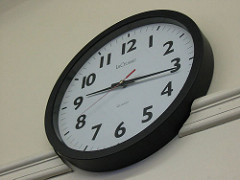Time for science?
By Mary Bigelow
Posted on 2016-10-30
 When I was student teaching, I had some really good science lessons for second-graders that lasted about an hour. But now I have only a half-hour for science each day. I need suggestions for shorter lessons. – C., Colorado
When I was student teaching, I had some really good science lessons for second-graders that lasted about an hour. But now I have only a half-hour for science each day. I need suggestions for shorter lessons. – C., Colorado
I’m glad to hear that your school schedules science daily. In many elementary schools, science and social studies have been deemphasized, in favor of reading and math.
- If your schedule is flexible enough, “borrow” time from another subject to complete the activity, making up the time later.
- Divide the activity into several parts, perhaps making observations or collecting data one day and doing the analysis or summarization later. (You may have to include time to review on the second day)
- Use time during writing instruction for students to summarize the lesson in their science notebooks.
- Use nonfiction books on the topic during reading instruction, read-alouds, or personal reading to provide background prior to or after the science lesson.
Each month, NSTA’s Science & Children publishes features to help educators craft additional age-appropriate lessons:
- Teaching with Trade Books explores a concept with recommended books and lessons. For example, the September 2016 topic is “What We Do With Ideas.”
- The Early Years features easy-to-use ideas for developing student interest and curiosity. The July 2016 topic is “Discovering Through Deconstruction.”
- Articles related to the monthly theme include lesson plans, connections to the Next Generation Science Standards, and related materials.
Even at the secondary level, the class period is often not long enough to complete an investigation or activity. And I’ve never heard science teachers say they had too much time!
Photo: https://www.flickr.com/photos/cgc/7080721/sizes/q/
Disclaimer: The views expressed in this blog post are those of the author(s) and do not necessarily reflect the official position of the National Science Teaching Association (NSTA).


